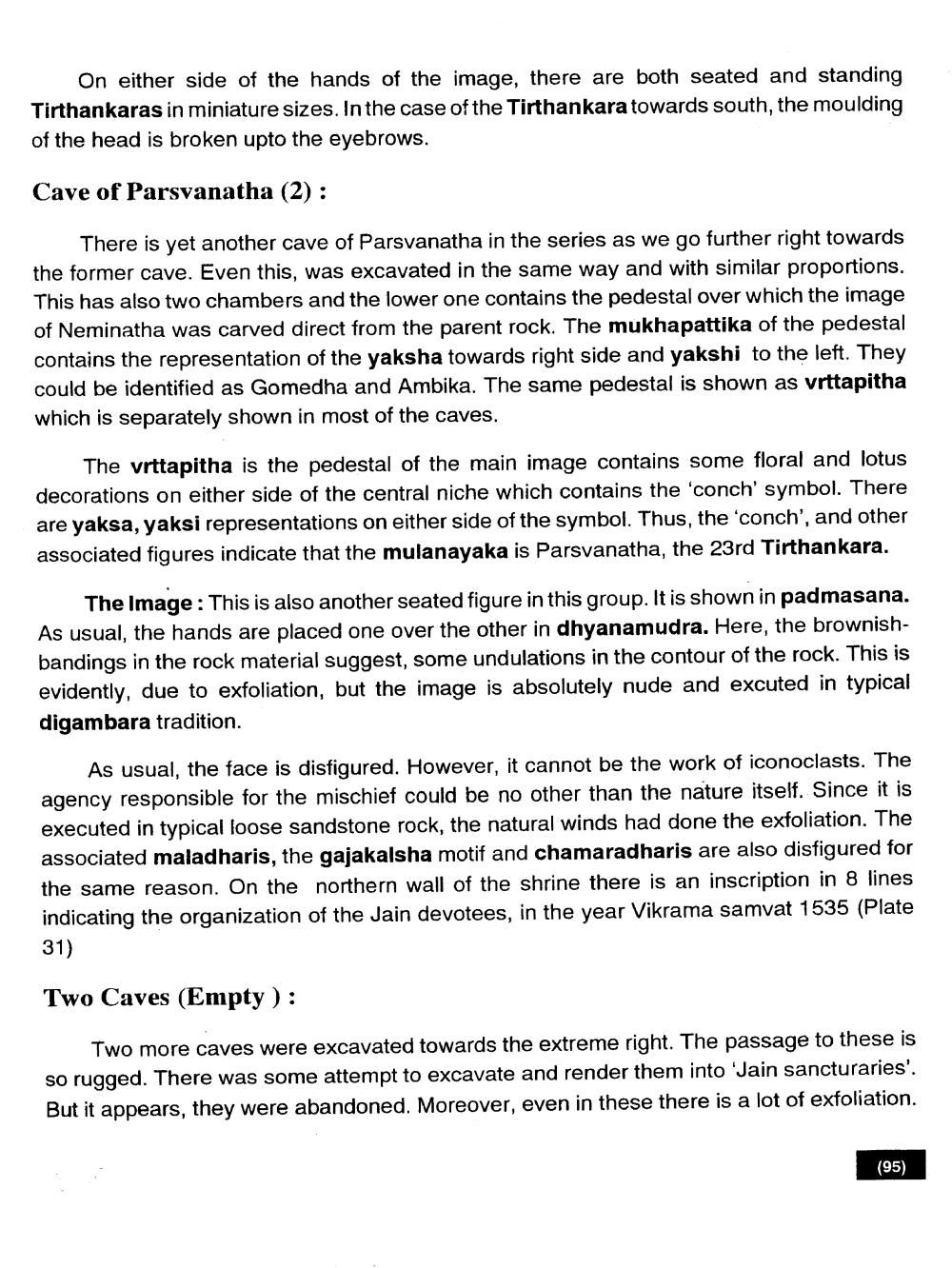________________
On either side of the hands of the image, there are both seated and standing Tirthankaras in miniature sizes. In the case of the Tirthankara towards south, the moulding of the head is broken upto the eyebrows.
Cave of Parsvanatha (2):
There is yet another cave of Parsvanatha in the series as we go further right towards the former cave. Even this, was excavated in the same way and with similar proportions. This has also two chambers and the lower one contains the pedestal over which the image of Neminatha was carved direct from the parent rock. The mukhapattika of the pedestal contains the representation of the yaksha towards right side and yakshi to the left. They could be identified as Gomedha and Ambika. The same pedestal is shown as vrttapitha which is separately shown in most of the caves.
The vrttapitha is the pedestal of the main image contains some floral and lotus decorations on either side of the central niche which contains the 'conch' symbol. There are yaksa, yaksi representations on either side of the symbol. Thus, the 'conch', and other associated figures indicate that the mulanayaka is Parsvanatha, the 23rd Tirthankara.
The Image: This is also another seated figure in this group. It is shown in padmasana. As usual, the hands are placed one over the other in dhyanamudra. Here, the brownishbandings in the rock material suggest, some undulations in the contour of the rock. This is evidently, due to exfoliation, but the image is absolutely nude and excuted in typical digambara tradition.
As usual, the face is disfigured. However, it cannot be the work of iconoclasts. The agency responsible for the mischief could be no other than the nature itself. Since it is executed in typical loose sandstone rock, the natural winds had done the exfoliation. The associated maladharis, the gajakalsha motif and chamaradharis are also disfigured for the same reason. On the northern wall of the shrine there is an inscription in 8 lines indicating the organization of the Jain devotees, in the year Vikrama samvat 1535 (Plate 31)
Two Caves (Empty):
Two more caves were excavated towards the extreme right. The passage to these is so rugged. There was some attempt to excavate and render them into 'Jain sancturaries'. But it appears, they were abandoned. Moreover, even in these there is a lot of exfoliation.
(95)




